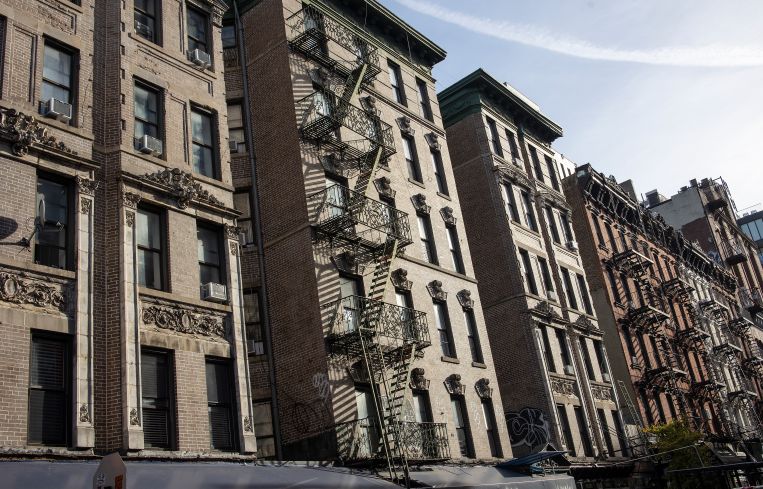NYC’s Unlocking Doors Policy: Misinterpreted Lack of Success and Structural Failure
By Ben Tapper October 9, 2025 10:36 am
reprints
In 2023, New York City launched the Unlocking Doors initiative with the goal of bringing rent-regulated apartments back onto the rental market. The policy promised to cover repair costs for vacant, rent-stabilized units if owners agreed to accept tenants with city-issued housing vouchers.
On Sept. 5, journalist David Brand reported in Gothamist that no owners had participated, citing city officials who claimed this proved warehousing of units wasn’t a major issue.
However, correlation is not causation. This statement carries the same implication as saying ice cream leads to drowning, because when more ice cream sells, more people drown. In reality, more people eat ice cream and drown in the summer, but ice cream does not cause drowning … and zero participation does not mean there aren’t tens of thousands of vacant rent-regulated units.

On paper, Unlocking Doors looks like a win-win: Units are repaired, voucher holders find affordable homes, and owners receive reimbursement for their investment. However, the city-cited statistics are misleading. The zero uptake is an indictment of the program’s design, not evidence of a non-problem.
Why zero participation? The answer lies not in a lack of eligible properties, but in the deep structural flaws embedded within the program itself.
Officials tout the program as a solution to both homelessness and the deterioration of the rent-regulated housing stock. They claim no uptake means no glut of vacant units. This is a clear misinterpretation of the statistics for political purposes.
The zero-uptake rate isn’t just a bureaucratic hiccup, it’s a clear signal that the policy is unworkable as designed. It should force a closer look at the economic realities for property owners and inadequacies of New York City’s voucher and reimbursement systems.
The policy requires property owners to front the repair costs with the promise of reimbursement … eventually. But the city’s track record on delayed payments is far from reassuring and very well documented.
Property owners often wait months or even over a year to be reimbursed through various city programs. For many, particularly small property owners who make up a significant portion of the rent-regulated market, this delay is financially untenable. They simply don’t have the liquidity to invest tens of thousands of dollars up front amid rising maintenance costs, property taxes and insurance premiums
Unlike market-rate renovations, improvements under Unlocking Doors don’t yield meaningful returns. Units remain rent-stabilized, capping rent increases, regardless of the money invested.
Property owners are asked to risk money for reimbursement “later,” then collect below-market rent from tenants, requiring more oversight and paperwork with no boost in property value. The city and state’s history of rolling back incentives only deepens distrust.
From a purely financial perspective, the proposition is irrational.
One of the city’s most well-determined but overlooked realities is the fragile financial state of many rent-stabilized property owners. They often operate without institutional backing, lack access to lines of credit, and are already burdened with regulatory compliance costs.
To them, Unlocking Doors isn’t an opportunity. It’s a liability. Asking them to absorb renovation costs when they are already deferring other building maintenance is a nonstarter. Repairing lead paint, fixing wiring, updating plumbing in century-old buildings, and refinishing or installing new floors can quickly exceed the modest reimbursement caps set by the program. Property owners are then on the hook for any overages, with no reimbursement or return on their investment.
The zero percent participation rate demonstrates this reality. Owners cannot justify the risk.
The program also exposes dysfunction in NYC’s housing voucher system. Even if reimbursements improved, property owners distrust voucher programs due to inconsistent rent payments, lease approval and inspection delays, bureaucratic red tape for renewals, and eviction hurdles for nonpaying tenants.
These issues erode confidence in participating in any city-backed housing initiatives, especially when tied to capped rents. The tenants themselves are not the concern. The city’s inefficiency is.
Fundamentally, the program assumes that capital is the limiting factor in reactivating the mass of vacant rent-regulated units. It is not.
Unlocking Doors was crafted with good intentions but poor execution. It reflects a deeper regulatory failure rooted in the Housing Stability and Tenant Protection Act of 2019.
Until officials address the delay in reimbursements, inflexibility of rent-stabilization rules, and lack of viable (or any) return on capital, New York will continue to struggle with underutilized housing stock and the widening gap between affordable units and those who need them.
True reform will require real economic understanding of how capitalism works. Until then, Unlocking Doors will remain exactly what it is today: a policy no one wants to touch.
Ben Tapper is executive managing director at brokerage Lee & Associates NYC.



